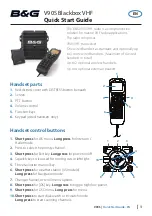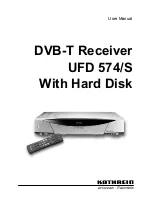
UHF Digital Hybrid Wireless
®
Rio Rancho, NM
13
Mounting and Orientation
A variety of accessories are available to enable various
mounting options. For maximum operating range, the
antennas should be vertical and above the camera and
other equipment. The AMJ Rev. A antenna is jointed so
the whips can be oriented vertically regardless of the
orientation of the receiver.
Maximum sensitivity is perpendicular to the whip, so
an ideal setup is shown in Fig. 1 and Fig. 2 where the
receiver is mounted in either a vertical or horizontal
position with the whips oriented vertically.
Fig. 3 depicts the receiver and antenna whips oriented
horizontally, which places the null of the receiver an-
tenna pattern pointing toward the transmitter. The result,
of course, is a weak signal entering the receiver.
Fig. 4 depicts the worst setup where the nulls in both
receiver and transmitter patterns face one another.
The transmitter antenna whips can point upward as
shown in these diagrams, but they will work just as well
with the whip pointing downward. Mount the transmitter
so that the whip is vertical and not in direct contact with
the wearer’s body or metallic objects in clothing and
costuming.
AMJ Rev. A Jointed
Antenna
The AMJ-944 Rev. A antenna is a general purpose
design with a hinged joint that pivots in both directions
for positioning the whip at any desired angle. The pivot
allows the whips to be oriented vertically regardless of
the mounting position of the receiver.
The hinged joint pivots in both directions
Tx
STRONG
SIGNAL
WEAK
SIGNAL
Rx
Rx
Tx
WEAKEST
SIGNAL
Rx
Tx
Tx
STRONG
SIGNAL
Rx
Fig. 1
Fig. 2
Fig. 3
Fig. 4














































